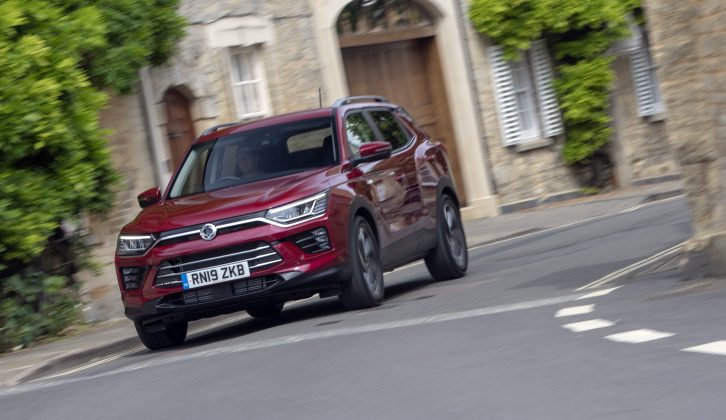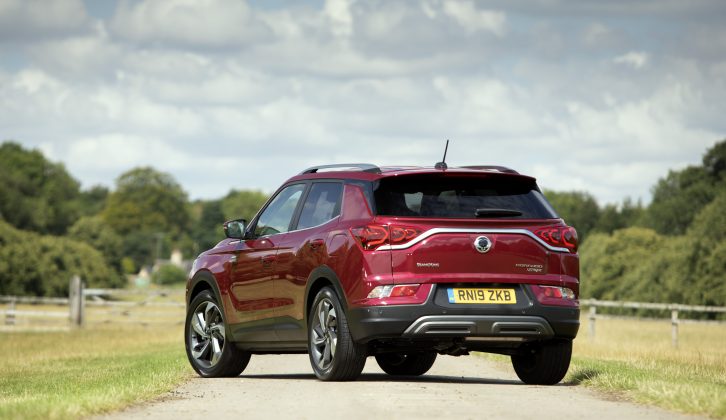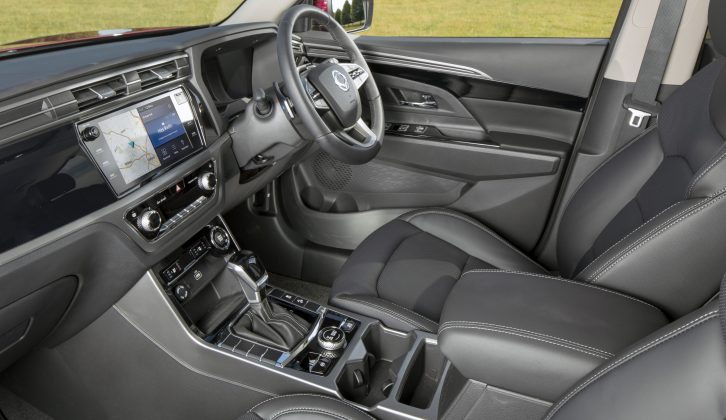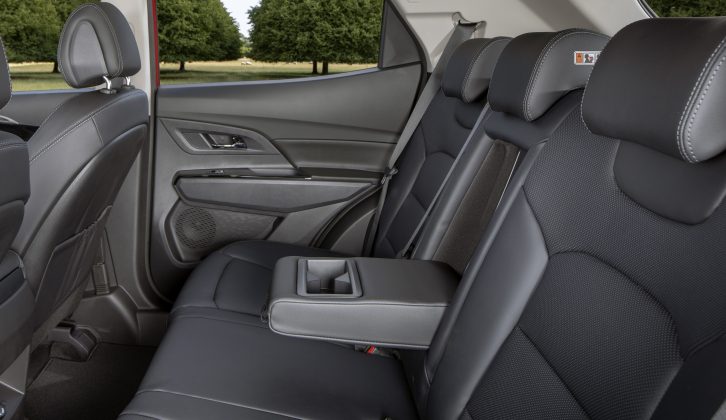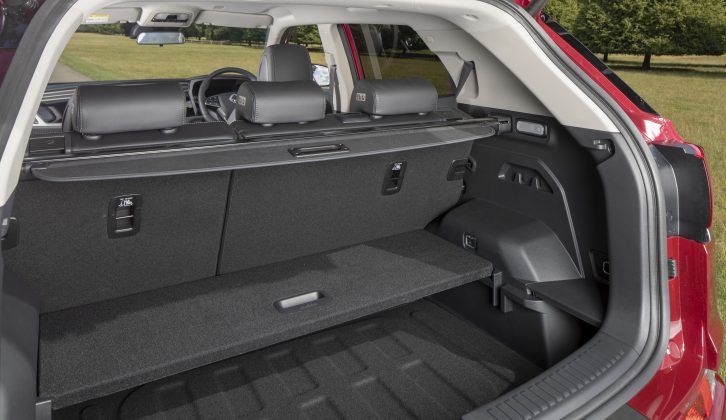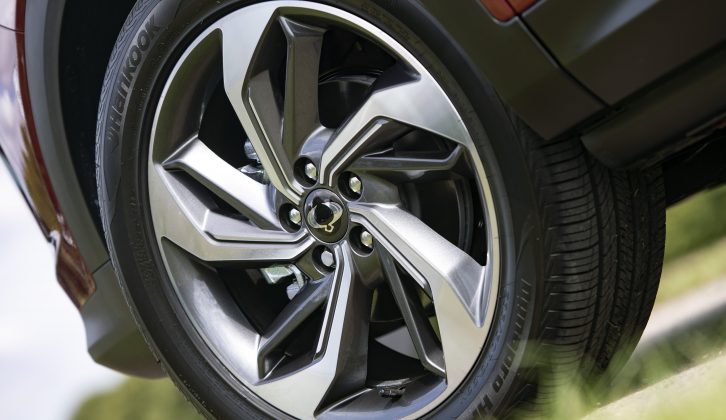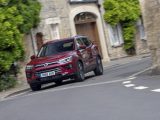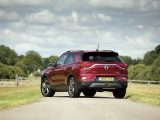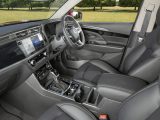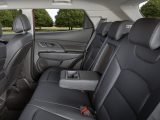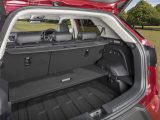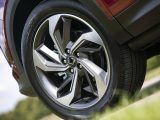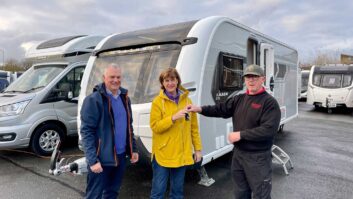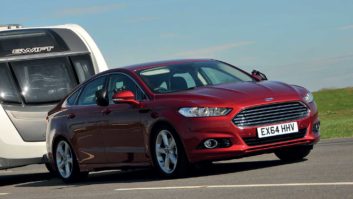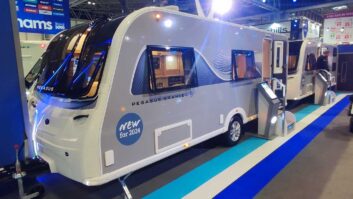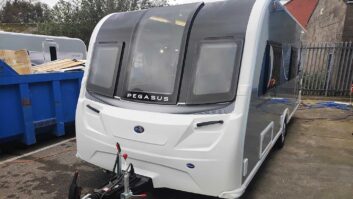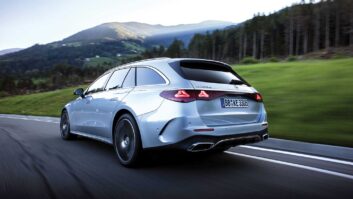SsangYong has a difficult task on its hands in replacing the Korando. The old model was a huge hit with caravanners, but didn’t make a big impression with mainstream car buyers. How do you keep the caravan cognescenti happy while appealing to drivers who have no interest in kerbweights and towing limits?
If you’re SsangYong, you start with a specification that’s tailor-made to appeal to caravanners. The kit supplied with the Pioneer trim level has been chosen based on feedback from tow car drivers, so a full-size spare wheel is standard. This model comes with mud and snow tyres which are better suited to manoeuvring on wet or muddy campsites.
There is a downside to having a spare wheel, and that’s a significant loss of boot space. With the full-size spare, there’s 407 litres, down from 551 litres. Other models have a split-level boot floor, which either sits flush with the tailgate with hidden storage underneath, or offers one large space with a drop to the floor.
Another change that caravanners may be in two minds about is the lower kerbweight of the latest model. The 1.6-litre diesel 2WD auto has a kerbweight of 1610kg, the 4WD weighs 1700kg. The old car weighed 1709-1825kg, depending on specification. But while anyone trading in their old Korando will notice the drop, this is still quite a hefty car by the standards of the class.
The 1.6-litre diesel is down on power compared with the old car’s beefier 2.2-litre. There’s 134bhp and 239lb ft of torque. But again, if you compare the new Korando with its contemporaries rather than its predecessor, it’s competitive. The equivalent Kia Sportage has 236lb ft of torque, for example.
While the diesel is rather clattery when cold, it settles down after a few miles. Once cruising, there’s little noise from under the bonnet, and there’s less wind and road noise than before, too.
Without the weight of a caravan, the engine pulls well enough but acceleration is steady rather than sparkling. It should be up to the job of towing a caravan weighing 85% of the car’s kerbweight, but don’t expect a lot of overtaking punch.
The plus side to accepting less power is better fuel economy. In 2WD form the diesel achieves 48.7mpg on the WLTP combined cycle. Choose a 4WD and the figure is 43.5mpg. However, both the 2WD and 4WD cars are thirstier than the equivalent Kia Sportage.
Being lighter and more fuel-efficient should help the Korando appeal to general SUV buyers. Whether tow car drivers or not, anyone should be impressed by the roomy cabin, which offers more space in the back than most rivals. Adults can sit comfortably behind a tall driver.
In the front, the dashboard design is more modern and appealing than the old car’s, although soft-touch plastics are reserved for the top of the dash. Top-spec cars have a larger nine-inch touchscreen and digital display instead of conventional dials. It gives a much more upmarket impression than the old model, although the hard plastics on the lower doors and poor quality stitching on the steering wheel undermine the positive first impression.
You don’t have to choose a high-end model to get a respectable kit list. ELX versions will arrive at the end of the year with 1.5-litre turbocharged petrol engine and a manual transmission. Cruise control, 17-inch alloy wheels, six airbags, a DAB radio and automatic lights and wipers are standard.
All ELX models will be front-wheel drive. Kerbweights haven’t been confirmed, but the legal towing limit will be 1500kg.
Ventura cars will also be petrol and 2WD, adding faux leather and cloth upholstery, 18-inch alloy wheels, heated front seats, front and rear parking sensors, digital instruments instead of dials, and an Apple CarPlay/Android Auto-compatible touchscreen.
The Pioneer is the first specification available with the 1.6 diesel, matched to a six-speed automatic gearbox, with a choice of 2WD and 4WD. There won’t be a petrol version. It has conventional dials rather than the digital instruments (we caravanners are a practical bunch and aren’t impressed by tech for its own sake, apparently!), and a full-size spare. Otherwise the spec is broadly similar to Ventura, but with a heated steering wheel and a rear-view camera, as well as 17-inch wheels fitted with mud and snow tyres.
Ultimate models are also diesel auto only for now, with 4WD. But a petrol 2WD will be added at the start of 2020. As well as the larger touchscreen, spec upgrades include leather upholstery, dual-zone air conditioning, keyless starting, and additional safety kit. Although the results of Euro NCAP testing have not yet been confirmed, SsangYong is predicting a five-star verdict.
All this extra tech and more polished road manners come at a price. The range starts at £19,995. That seems like a modest £1000 increase on the old car until you realise the new range starts with a petrol, and the old car was diesel only. If you want a diesel for towing duties, the starting price is now £26,495.
The new Korando is a much improved car in most respects, and as a day-to-day drive it can compete with the likes of the Kia Sportage and Nissan Qashqai. What’s more, it’s very well equipped, and has the back-up of a seven-year warranty.
However, you now need much deeper pockets to buy one, certainly if you want the pulling power and economy of a diesel. And it’s lighter and less powerful than the car it replaces, which may lessen its appeal in the eyes of caravanners.
We’ll find out for ourselves how well it tows when we put the car through a full test later in the autumn.
Being lighter and more fuel-efficient should help the Korando appeal to general SUV buyers
